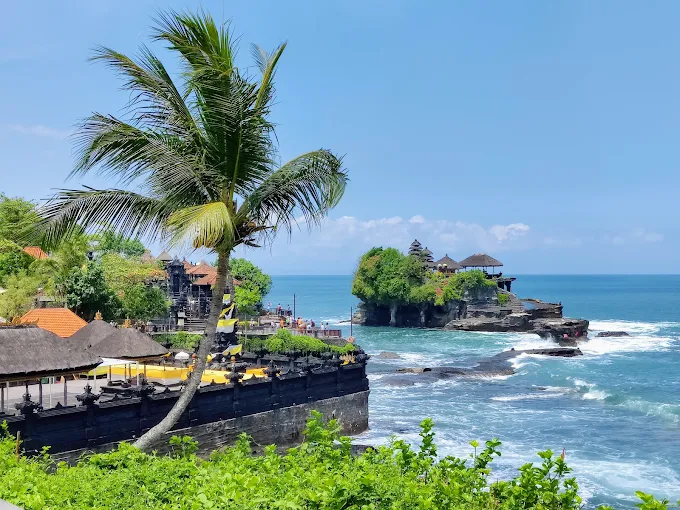Tanah Lot is one of Bali’s most iconic sea temples. Located on a rocky outcrop, this temple offers stunning views, especially at sunset. In this article, you’ll discover its fascinating history, tips for visiting, and nearby attractions to enhance your trip.
Key Takeaways
- Tanah Lot Temple, established in the 15th-16th centuries by Hindu priest Dang Hyang Nirartha, is a significant spiritual site in Bali dedicated to the gods of the sea.
- Extensive restoration efforts funded by the Japanese government in the 1980s have preserved Tanah Lot Temple despite severe erosion and natural degradation.
- Visitors to Tanah Lot Temple should respect local customs, dress modestly, and be mindful of cultural traditions while exploring the site’s spiritual and natural beauty.
History of Tanah Lot Temple
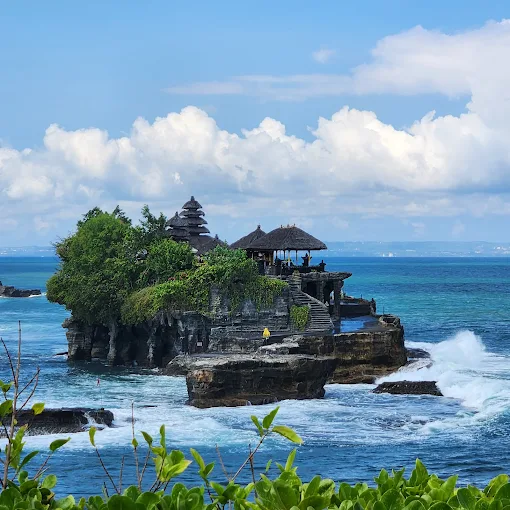
Source: YuShan
The story of Tanah Lot Temple begins with a revered Hindu priest named Dang Hyang Nirartha. In the 16th century, Nirartha embarked on a sacred journey from Java to Bali, carrying with him profound spiritual teachings and a mission to spread Hinduism across the island. Legend has it that he traversed the seas on top of a pumpkin, arriving in Bali to a warm and divine welcome. Inspired by the natural beauty of the rocky outcrop, Nirartha decided to establish Tanah Lot Temple, dedicating it to the gods of the sea.
Constructed between the 15th and 16th centuries, Tanah Lot Temple stands as a testament to Bali’s enduring spiritual traditions. The temple, whose name translates to “Land in the Sea,” was built upon a large coral rock, sculpted by the relentless waves of the Indian Ocean. This ancient Hindu temple sits as part of a series of sea temples established along Bali’s coastline, intended to honour the sea gods and protect the island from evil spirits.
Tanah Lot Temple, also known as Pura Tanah Lot, is not just a beautiful sight but also a vital spiritual hub for the Balinese people. The temple’s founder, Dang Hyang Nirartha, is celebrated in Balinese mythology for his supernatural abilities and divine connection to the sea gods. Today, Tanah Lot remains a revered site of worship, drawing both pilgrims and tourists who seek to experience its mystical ambiance and spiritual significance.
Restoration Efforts
By 1980, nature’s unyielding impact had severely affected Tanah Lot Temple. The rock face that supported this iconic structure began to crumble, posing a significant risk to the temple and its visitors. The persistent large waves of the Indian Ocean had caused severe erosion, threatening to wash away a piece of Bali’s cultural heritage.
Recognising the urgent need for conservation, the Japanese government stepped in with a generous loan of Rp 800 billion (approximately US$480 million) to the Indonesian government. This funding allowed for extensive restoration and stabilisation efforts, with over one-third of Tanah Lot’s rock structure now being artificial.
Owing to these restoration initiatives, Tanah Lot Temple remains resilient, captivating visitors globally.
Visiting Tanah Lot Temple
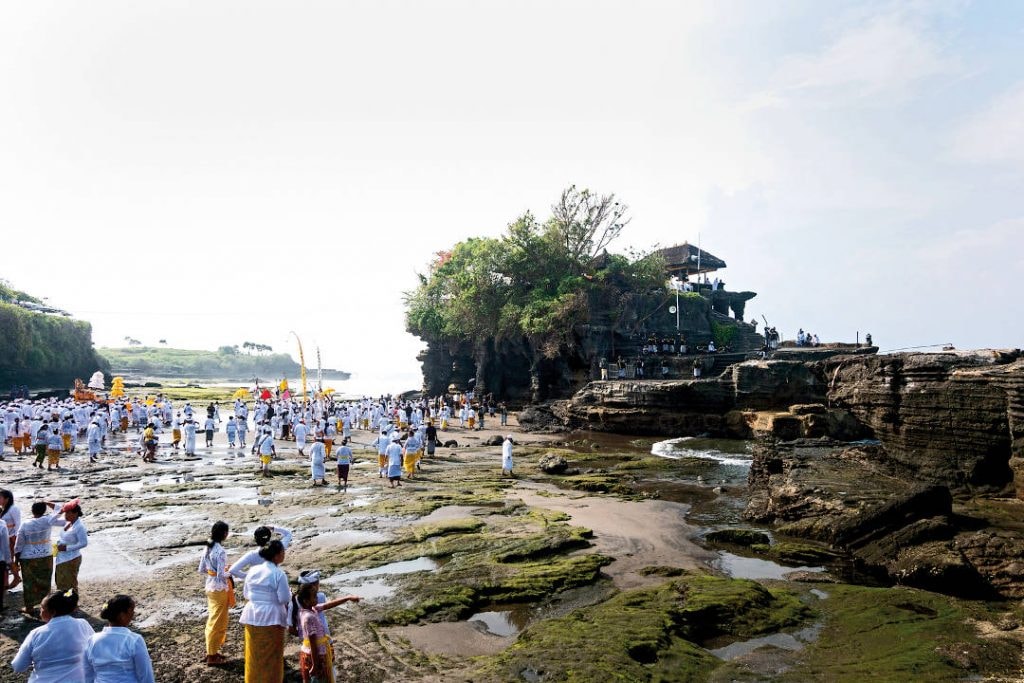
Source: nowbali.co.id
A visit to Tanah Lot Temple is an impactful experience, necessitating respect for local customs and traditions. While there is no formal dress code for foreigners, it is advisable to dress modestly to honour the sacredness of the site. Women should avoid entering the temple area during menstruation and pregnancy, adhering to traditional Balinese standards.
The temple, situated on Bali’s southwestern coast in Tabanan Regency, is not only a religious site but also a popular tourist attraction. A visit to Tanah Lot, located on Bali’s southwestern coast, offers:
- Immersion in a realm rich in history and spirituality
- Enveloping by the ocean’s natural beauty
- Distinctive rock formations that underscore this iconic temple
Entrance Fees

Source: tanahlot.id
To experience the majesty of Tanah Lot Temple, visitors are required to pay an entrance fee of 75,000 IDR for adults and 40,000 IDR for children. This fee not only grants access to the main temple but also includes entry to the nearby Batu Bolong Temple, offering a comprehensive exploration of these sea temples.
Opening Hours
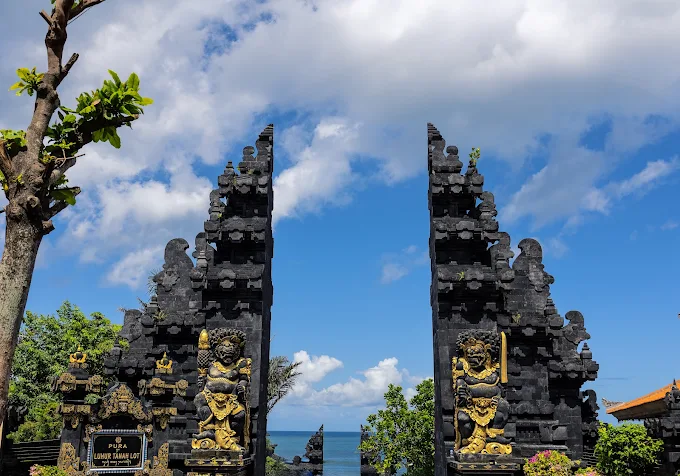
Source: Ralf Mertens
Tanah Lot Temple is open to visitors daily from 7:00 AM to 7:00 PM. These extended hours allow ample time to explore the temple grounds, take in the scenic views, and participate in any cultural activities or ceremonies that may be taking place.
Best Time to Visit
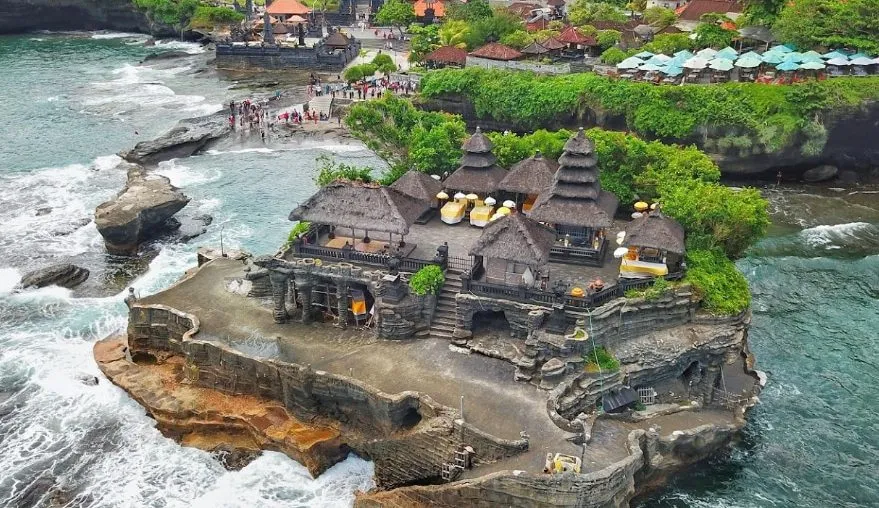
Source: tripcetera.com
The ideal period to explore Tanah Lot Temple is during the dry season, running from April to October. This period offers the most favourable weather conditions, allowing you to fully enjoy the outdoor beauty and spiritual ambiance of the temple. Late afternoon or early evening is particularly ideal, as you can witness the spectacular sunset over the Indian Ocean, a sight that transforms the temple into a glowing silhouette against the horizon.
Additionally, timing your visit with the tides can enhance your experience. High tide allows you to see the waves crashing dramatically against the rocks, adding to the temple’s mystical aura.
Conversely, low tide provides easier access to the temple’s base and the nearby caves where holy snakes reside.
What to See and Do at Tanah Lot Temple
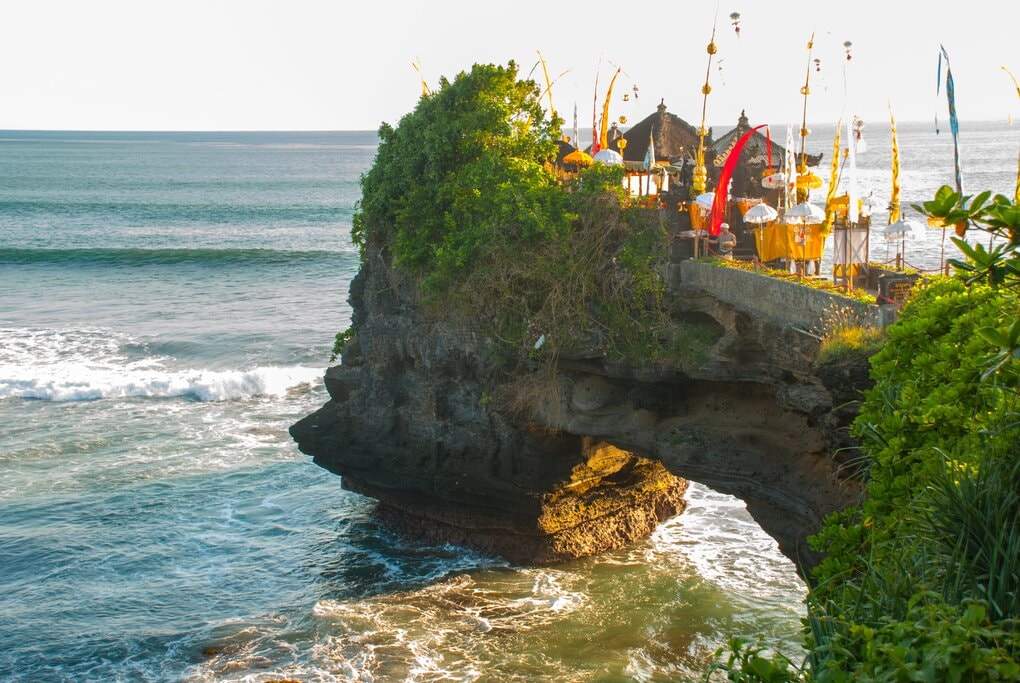
Source: kimkim.com
Tanah Lot Temple presents a range of attractions and activities for both spiritual enthusiasts and adventure-seekers. The legendary sunset view is a highlight, drawing photographers and tourists alike who wish to capture the temple bathed in the warm glow of the setting sun. Exploring the unique rock formations and experiencing the waves crashing against them at high tide adds to the temple’s mystical allure.
Clifftop Terrace Views
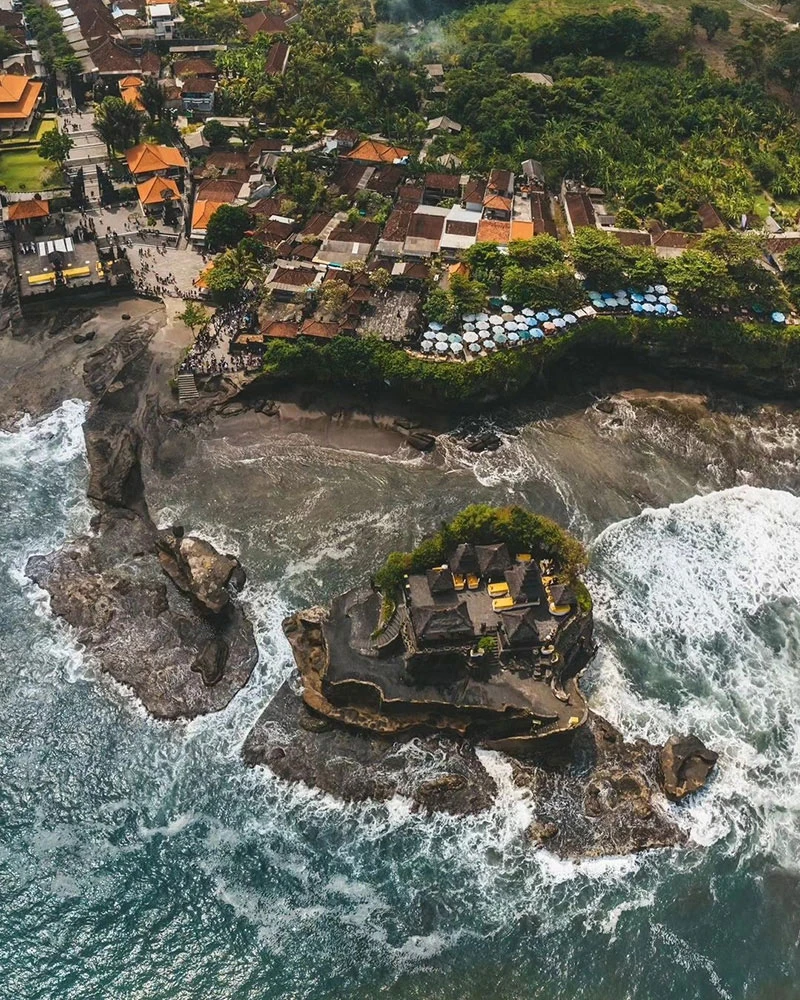
Source: tanahlot.id
The clifftop terrace serves as an excellent vantage point to appreciate Tanah Lot Temple’s beauty. This stunning location offers panoramic views of the temple against the backdrop of the vast Indian Ocean. It’s an excellent vantage point for witnessing the breathtaking sunsets that Tanah Lot is famous for, making it a must-visit spot for photographers and nature lovers alike.
Holy Snake and Holy Spring
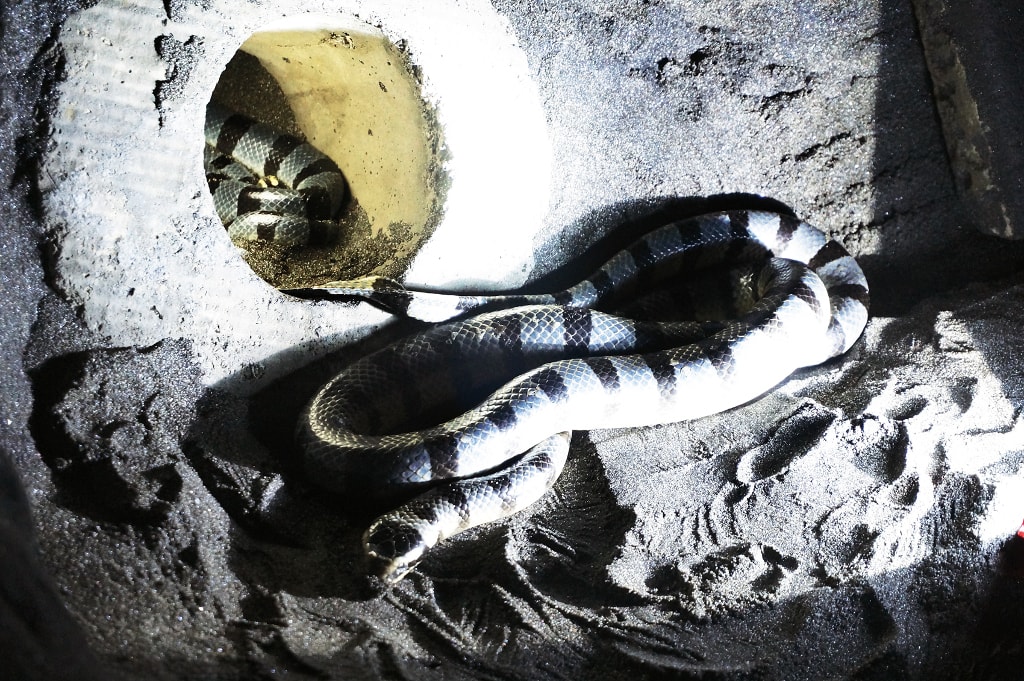
Source: nowbali
A unique feature of Tanah Lot Temple is the presence of the holy sea snakes, particularly the Banded Sea Krait, known for its black and white rings. These sea snakes are believed to be the incarnations of Dang Hyang Nirartha’s shawls, guarding the temple from evil spirits and intruders. For a small fee, visitors can view these sacred creatures, adding an element of intrigue and mysticism to their visit.
In addition to the holy snakes, there is a sacred water spring located in a cave near the temple. This holy spring is considered to be blessed water and holds significant religious importance. Visitors often collect this holy water for blessings, believing in its purifying properties.
Batu Bolong Temple
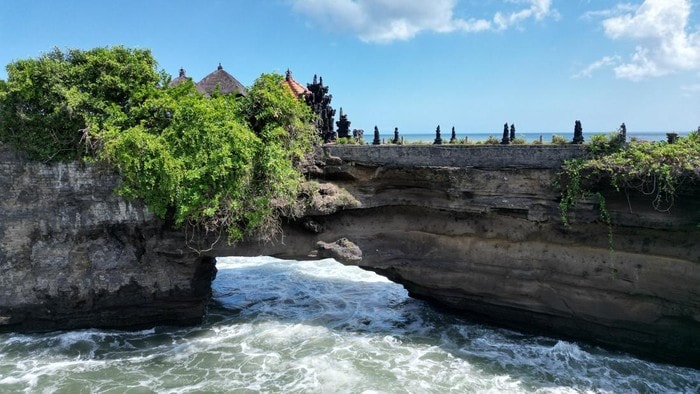
Source: detik.net.id
Batu Bolong Temple is just a short walk from Tanah Lot Temple. It is another captivating sea temple that is worth visiting. Batu Bolong, which means ‘hollow stone,’ is named after the distinctive rock formation with a natural arch that it sits upon. This smaller temple is connected to the mainland by a natural sea bridge, adding to its unique charm and scenic beauty.
The rocky outcrop on which Batu Bolong Temple stands, often referred to as a rocky island, offers breathtaking views of the ocean, making it a popular spot for those looking to capture the essence of Bali’s coastal beauty. The temple features two main temples and fourteen pagodas, providing a serene and picturesque setting for visitors.
Cultural Significance and Traditions
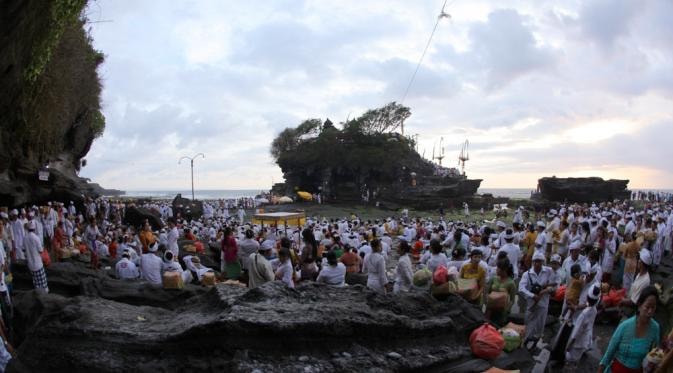
Source: liputan6.com
Tanah Lot Temple carries considerable cultural importance to the Balinese people. It is dedicated to Baruna, the Hindu god of the sea, and plays a crucial role in the spiritual life of the island. The temple was built to honour Bhatara Segara, another name for the sea god, reinforcing its connection to the ocean and the reverence for Balinese sea gods.
One of the most important traditions associated with Tanah Lot is the Odalan festival, which takes place every 210 days and coincides with the Galungan and Kuningan festivities. During this festival, Balinese women carry elaborate offerings on their heads in ceremonial processions to the temple. The area around the temple also hosts cultural performances, including traditional Balinese dance.
Nearby Attractions
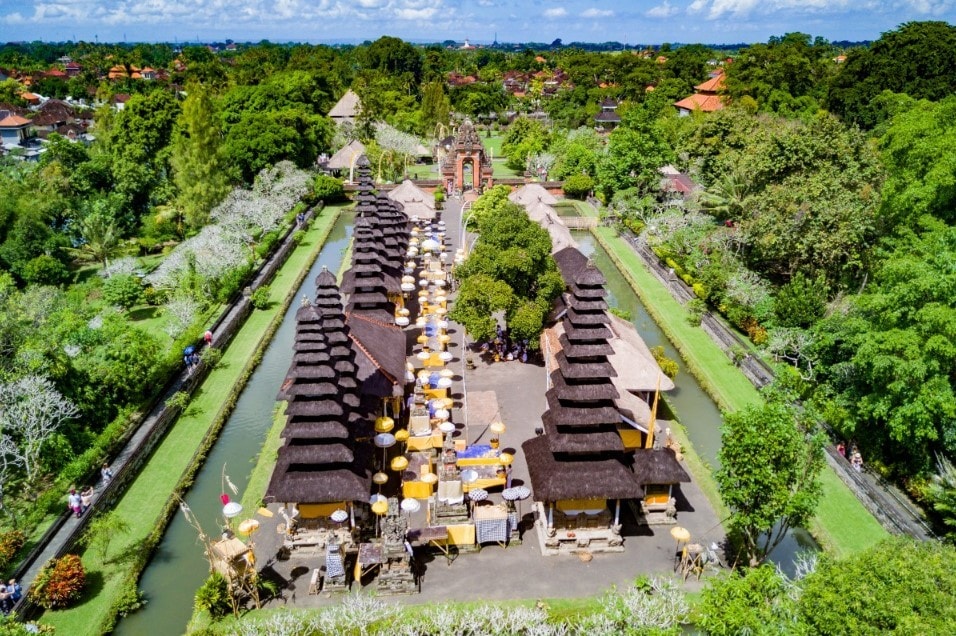
Source: befreetour.com
The vicinity of Tanah Lot Temple brims with attractions enhancing your visit. From serene beaches to historical temples, there is no shortage of places to explore. Kedungu Beach, located nearby, offers a picturesque setting with its black sand and tranquil atmosphere. For those seeking adventure, horseback riding tours are available from the Equestrian Centre near Echo Beach.
Taman Ayun Temple, another cultural gem, is located in Mengwi Village and is renowned for its classical Balinese architecture and serene lotus ponds. Even closer to Tanah Lot is the Nirwana Bali Golf Club, where you can enjoy a scenic golf experience with stunning views of the temple and ocean.
Echo Beach
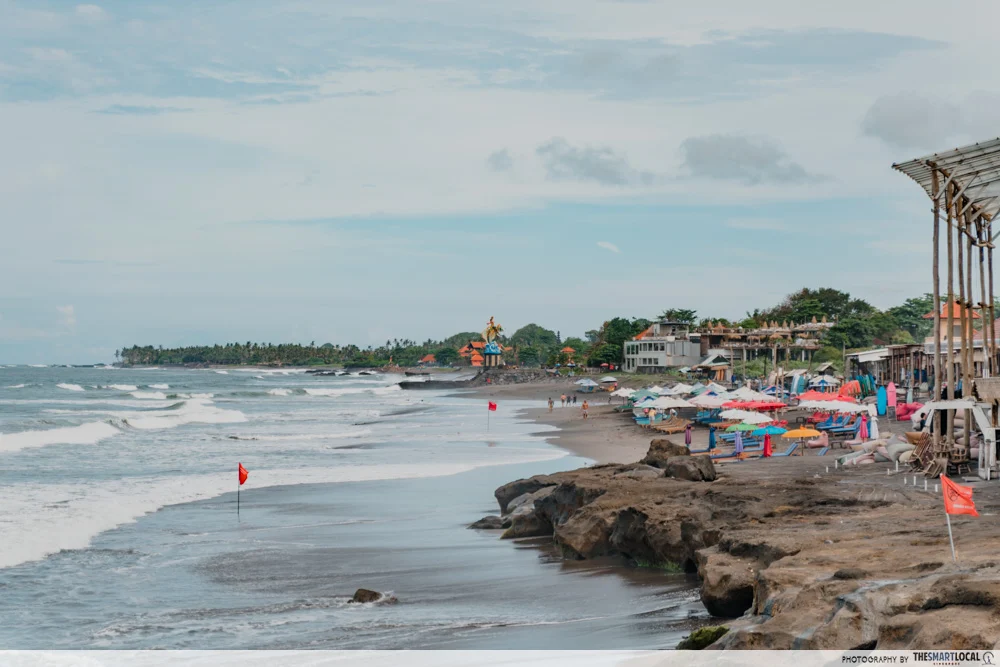
Source:thesmartlocal.com
Echo Beach, situated in the Canggu area, is approximately 15 minutes from Tanah Lot Temple. Known for its consistent surfing waves and vibrant ambiance, Echo Beach is a popular spot for both locals and tourists.
The beach offers a lively atmosphere with numerous cafes and bars, making it an ideal place to relax after a day of exploring Tanah Lot.
Pasut Beach
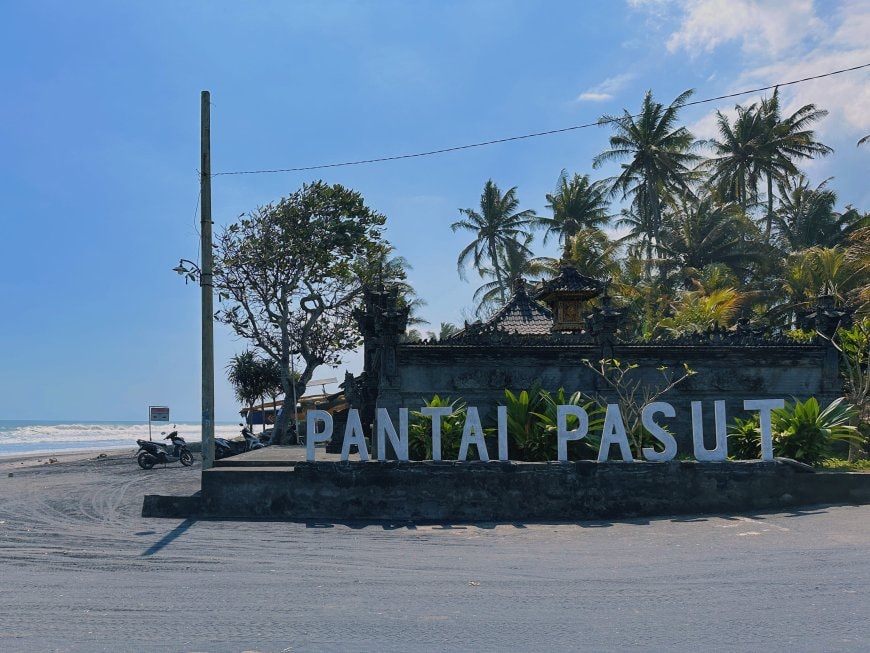
Source: budayabali.com
Pasut Beach is a hidden gem located a short distance from Tanah Lot Temple. This picturesque black sand beach is surrounded by a lush coconut palm tree forest, providing a serene and natural setting.
The beach is also renowned for its stunning sunset views, making it a perfect spot for an evening visit.
Taman Ayun Temple
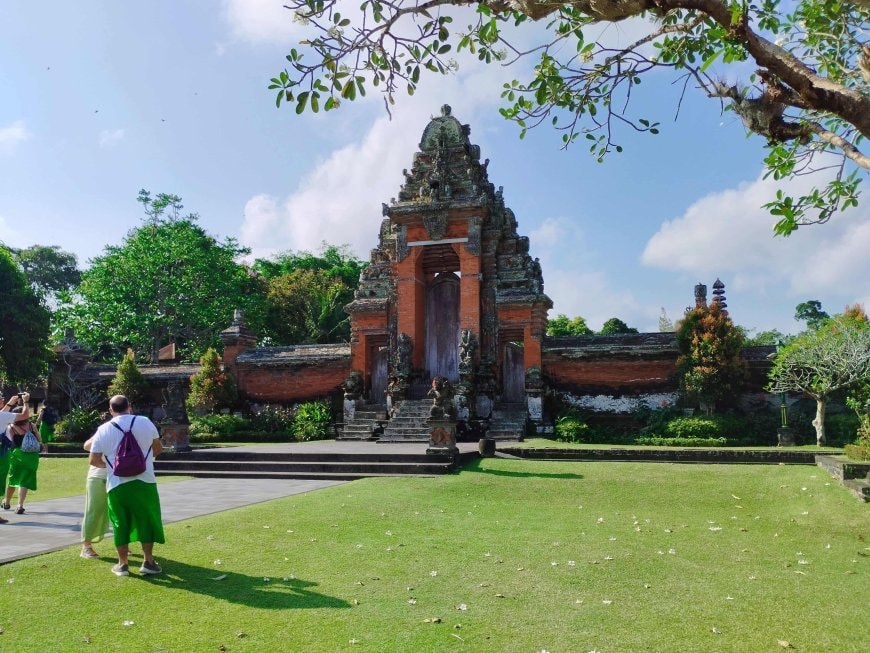
Source: budayabali.com
Taman Ayun Temple, one of Bali’s esteemed royal temples, is located in Mengwi Village, not far from Tanah Lot Temple. This temple is a prime example of classical Balinese architecture, featuring intricate carvings and tiered towers that reflect the island’s rich cultural heritage. The temple grounds are encircled by serene lotus ponds, creating a peaceful and picturesque environment for visitors to explore the beauty of Balinese temples.
A visit to Taman Ayun Temple offers:
- A glimpse into Bali’s royal past
- An opportunity to experience Bali’s enduring spiritual traditions
- A more tranquil experience compared to the crowded Tanah Lot
It is a must-visit for those looking to explore Bali’s cultural landmarks.
How to Get to Tanah Lot Temple
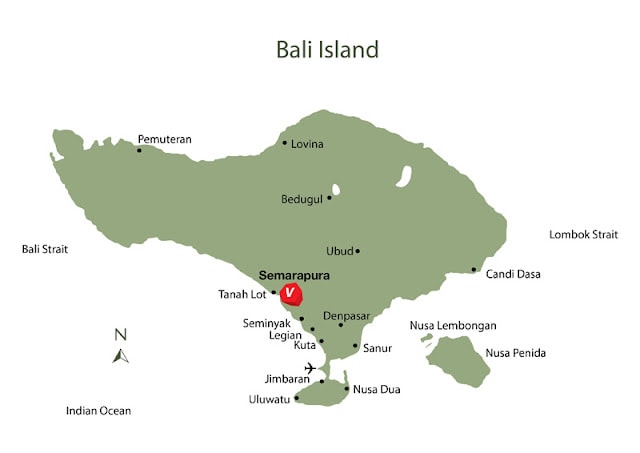
Source: azaleania
Tanah Lot Temple, located conveniently in Tabanan Regency, is easily reached from various parts of Bali. The journey from Ngurah Rai International Airport typically takes 45 minutes to an hour, depending on traffic. Travel times from popular tourist areas like:
- Nusa Dua
- Jimbaran
- Kuta
- Seminyak
- Canggu
- Sanur
range from 30 minutes to 2 hours.
There are several transport options available to reach Tanah Lot:
- Renting a private car with driver or taking a taxi offers the most flexibility, allowing you to make stops along the way.
- For those who enjoy a bit of adventure, renting a motorbike is a popular choice, provided you have a valid international driver’s license.
Many guided tours offer hotel pick-up and drop-off, transportation, and knowledgeable guides, making it a convenient option for first-time visitors.
Bali Res Centre offers a Tanah Lot Sunset Tour via private car and driver. This tour is the perfect way to enjoy a visit to Tanah Lot Temple at the most majestic time of day. Guests will also visit Echo Beach where they can enjoy dinner before being returned to their hotel.
Dining Options Near Tanah Lot Temple
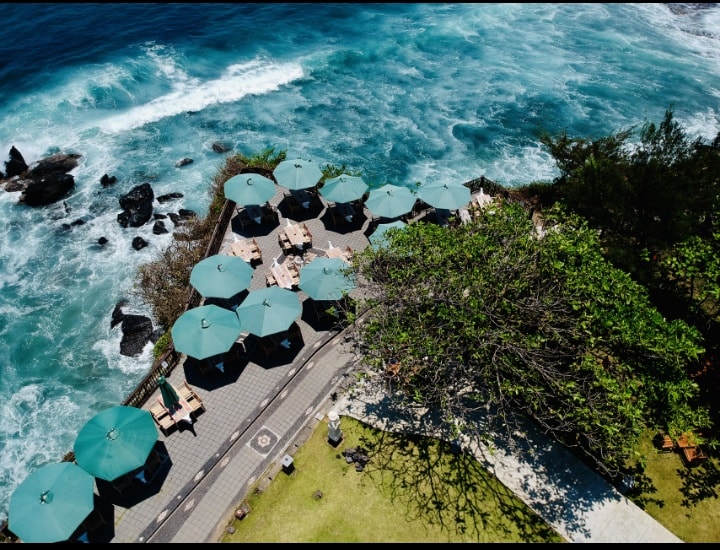
Source: suryamandalatanahlot.com
After exploring Tanah Lot Temple, a variety of dining options catering to diverse tastes await you.
- The Ocean Restaurant Tanah Lot: Enjoy a meal with a view, offering scenic vistas just a short walk from the temple.
- De Jukung Resto & Bar: Another option for a meal with a view, also located near the temple.
https://www.suryamandalatanahlot.com/de-jukung-resto-bar/
- Natys Restaurant Tanah Lot: If you prefer local flavours, this restaurant serves delicious Balinese cuisine in a convenient location.
https://natysrestaurant.com/natys-tanah-lot/
- Warung Bebek Sari Uma: Another great option for delicious Balinese cuisine.
For a more diverse dining experience, head to nearby eateries such as Depots Dini Cafe Restaurant, Gloria Jeans Tanah Lot, and Downtown Kedungu, which offer everything from coffee to hearty meals. If you are willing to venture a bit further, Hippie Fish Pererenan Beach, Don Juan Mexican Restaurant, and Sawah Bali are just a short drive away and provide a variety of international cuisines.
Accommodation Near Tanah Lot Temple

Source: balibeachglamping
Whether luxury accommodation or eco-friendly retreats appeal to you, numerous options are available in proximity to Tanah Lot Temple. The Natya Hotel Tanah Lot, located just 0.3 km from the temple, offers convenient access and comfortable accommodation. For a more luxurious stay, consider Nirjhara or Shore Amora Canggu, both of which provide high-end amenities and stunning views.
If you prefer a more unique experience, some eco-friendly accommodations in Bali include:
These options blend seamlessly with the natural surroundings and provide a serene and relaxing atmosphere. They are also within a short distance from Raya Tanah Lot and Tanah Lot.
Tips for Visiting Tanah Lot Temple
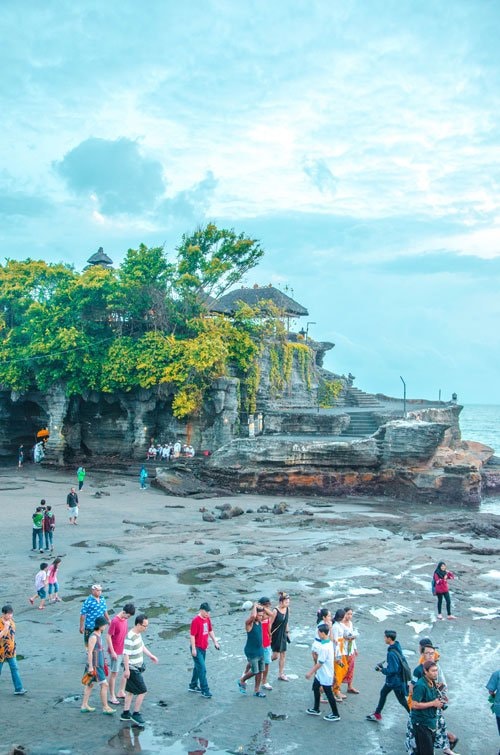
Source: travelonthebrain.net
For an optimal visit to Tanah Lot Temple, it’s advisable to plan your trip for late afternoon or early evening. This timing allows you to witness the breathtaking sunset, which is one of the temple’s most iconic features. Bringing a camera or smartphone to capture these moments is highly recommended.
Respecting local customs is crucial when visiting this sacred site. Here are some guidelines to follow:
- Dress modestly
- Be mindful of the temple’s rules, such as avoiding entry during menstruation and pregnancy
- Ensure you dispose of your trash properly to help preserve the temple’s pristine environment.
Summary
Tanah Lot Temple is more than just a picturesque landmark; it is a profound cultural and spiritual symbol for the Balinese people. From its rich history, dating back to the 16th century, to its significant restoration efforts, the temple stands as a testament to Bali’s enduring heritage. Visitors can enjoy a variety of activities, from exploring the unique rock formations and holy snakes to witnessing the legendary sunset views.
Whether you are interested in the temple’s cultural significance, nearby attractions, or practical tips for your visit, this guide provides all the information you need for an unforgettable experience. Embrace the spiritual ambiance, respect the local customs, and immerse yourself in the natural beauty that surrounds Tanah Lot Temple. Your journey to this iconic temple will surely be a highlight of your time in Bali.
Frequently Asked Questions
What is the best time to visit Tanah Lot Temple?
The best time to visit Tanah Lot Temple is during the dry season from April to October, especially in the late afternoon or early evening to enjoy the breathtaking sunset views.
Are there any entrance fees for Tanah Lot Temple?
Yes, there is an entrance fee for Tanah Lot Temple. The fee is 75,000 IDR for adults and 40,000 IDR for children, and it includes access to Batu Bolong Temple.
What are the opening hours of Tanah Lot Temple?
Tanah Lot Temple is open daily from 7:00 AM to 7:00 PM.
Can I visit Tanah Lot Temple during menstruation or pregnancy?
No, according to traditional Balinese standards, women should avoid entering the temple area during menstruation and pregnancy.
What are some nearby attractions to Tanah Lot Temple?
Some nearby attractions to Tanah Lot Temple include Echo Beach, Pasut Beach, Taman Ayun Temple, and Nirwana Bali Golf Club, each offering distinct experiences and beautiful views.

